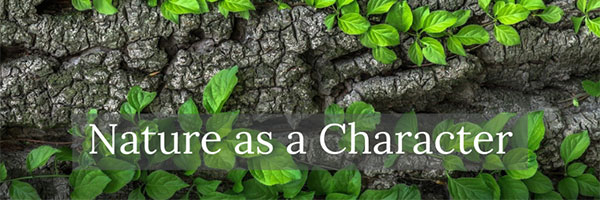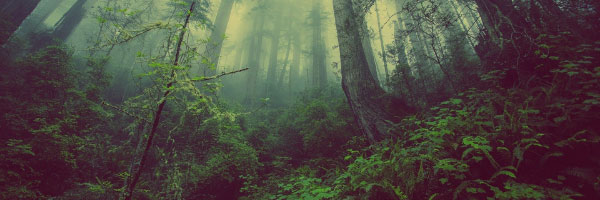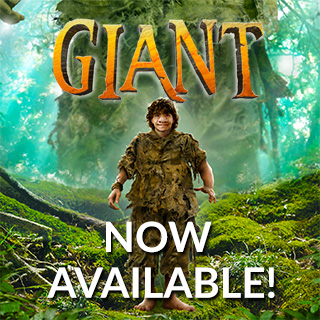Nature as a Character

Making characters come alive is one of the trickiest but most important elements of writing. Before I start to write, I usually take extensive notes about each character. I then expand that description even further as I get to know them better throughout each draft. When I see how they look in my mind and can hear their voice echoing, then I know I’m close to knowing who they are. But it’s not until they lean close and whisper to me their innermost secrets — their deepest fears, their highest hopes, and their innermost longings — that they are truly real. The most interesting characters, at least to me, are the ones who are complex and have many intricate threads woven into the tapestry of their story.
Nature plays a crucial role in all my books. In fact, I’d go so far as to say that I treat the natural world not merely as a setting, a backdrop for my stories — but as a full-blown character. Places are alive, just like you or me! They have moods, histories, and qualities that can be bizarre, humorous, tragic, mysterious, or inspiring. Part of my job as a writer is to make those places so real, so sensuous, so fully alive, that readers want to voyage there again and again. Once I feel like my readers will be able to fully connect with these magical places, I begin to weave environmental themes and awareness into the stories.

I truly believe that saving the Earth is about saving our fellow creatures — as well as ourselves. Stories are a wonderful way to convey this idea, sometimes directly and sometimes through metaphors.
The Great Tree of Avalon is a voyage into an imaginary world in the form of a tree. I hope it’s a great, exhilarating adventure for readers — but I also hope that in this journey to a magical world, they will ask crucial questions about how humanity can live sustainably in a different, equally magical world that they already call home — Earth.
My books about the young wizard Merlin — twelve books in all, now translated into more than twenty languages — are really an extended environmental parable. Merlin (much like the guy who wrote the books) learns all his greatest lessons from nature. His elemental magic comes from listening to the language of rivers and trees, flying as a hawk, and running with the deer.
Here’s an excerpt (from MERLIN: The Raging Fires) when he becomes a stag:
“Somehow, in a mysterious way, I was listening not just to sounds, but to the land itself. I could hear, not with my ears but with my bones, the tensing and flexing of the earth under my hooves, the changing flow of the wind, the secret connections among all the creatures who shared these meadows—whether they crawled, slithered, flew, or ran. Not only did I hear them; I celebrated them, for we were bound together as securely as a blade of grass is bound to the soil.”
In The Ancient One, a young woman named Kate tries to save a great redwood tree from loggers — and discovers that this ancient tree holds the answer to a riddle about what really happened to a lost tribe of Native Americans who vanished centuries before. Helped by the tree, Kate travels back in time and learns a lot from those people. And she also learns from the tree itself, whose very breath is a revelation:
As she listened … she heard a rushing, coursing sound, like the surging of several rivers. She realized that it must be the sound of resins moving through the trunk and limbs of the tree. And, strangely, through her own self as well … Back and forth, in and out, always changing, always the same. This was the sound, Kate realized at last, of the tree itself breathing. The sound of life being exchanged for life, breath for breath.
That story, appropriately enough, was inspired by a long walk in the Muir Woods — right before a visit to the San Francisco office of Earthjustice.
My picture book for youngsters that tells a tale of what might have happened on Easter Island, The Day the Stones Walked, and Tree Girl, a story of a brave girl who found that the forest is full of spirits, both encompass the profound ways that nature influences, teaches, and heals us.
Sometimes I take a break from fiction and try my hand at straight nature writing. These books, set in the Colorado wilderness, are really just an excuse for a good hike. (Not that I need much excuse.) I teamed up with an excellent nature photographer, John Fielder, to create books such as To Walk In Wilderness — which can never fully express the wonder and beauty and majesty of this environment, but which I hope convey at least a hint.
I strongly believe it is our responsibility, as humanity, to be stewards of the Earth — to care for our fellow creatures and nature itself — by not only viewing them as the main characters of their own story but as supporting characters in our own.

